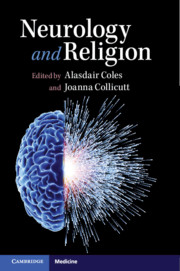Book contents
- Neurology and Religion
- Neurology and Religion
- Copyright page
- Contents
- Contributors
- Preface
- Part I The Neurological Study of Religion
- Part II Neurology and Religion
- II.I Clinical Conditions
- Chapter 9 Temporal Lobe Epilepsy, Dostoyevsky and Irrational Significance
- Chapter 10 Parkinson’s Disease, Religious Belief and Spirituality
- Chapter 11 Beyond Reasonable Doubt
- Chapter 12 Ramadam Fasting and Neurologic Disorders
- Chapter 13 Autism and the Panoply of Religious Belief, Disbelief and Experience
- Chapter 14 Personhood and Religion in People with Dementia
- Chapter 15 Religion and Frontotemporal Dementia
- II.II Therapy
- II.III Death and the Brain
- Bibliography
- Index
- References
Chapter 15 - Religion and Frontotemporal Dementia
from II.I - Clinical Conditions
Published online by Cambridge University Press: 28 October 2019
- Neurology and Religion
- Neurology and Religion
- Copyright page
- Contents
- Contributors
- Preface
- Part I The Neurological Study of Religion
- Part II Neurology and Religion
- II.I Clinical Conditions
- Chapter 9 Temporal Lobe Epilepsy, Dostoyevsky and Irrational Significance
- Chapter 10 Parkinson’s Disease, Religious Belief and Spirituality
- Chapter 11 Beyond Reasonable Doubt
- Chapter 12 Ramadam Fasting and Neurologic Disorders
- Chapter 13 Autism and the Panoply of Religious Belief, Disbelief and Experience
- Chapter 14 Personhood and Religion in People with Dementia
- Chapter 15 Religion and Frontotemporal Dementia
- II.II Therapy
- II.III Death and the Brain
- Bibliography
- Index
- References
Summary
In the setting of disease, religion can play a positive role in a person’s life, helping them manage their perception of an illness, bolstering the ability of the patient and their family to manage the diagnosis, day-to-day functioning and treatment [1]. Individuals who have practised religion earlier in life may show new vigour in their belief after diagnosis of a serious illness, or religion can be discovered for the first time. Increased religiosity can be a means for support and comfort through difficult periods in a person’s life.
- Type
- Chapter
- Information
- Neurology and Religion , pp. 161 - 170Publisher: Cambridge University PressPrint publication year: 2019
References
- 2
- Cited by



